Fix: Battle.Net Error BLZBNTAGT000008A4
Blizzard’s Battle.net launcher may show error BLZBNTAGT000008A4 due to ISP’s restrictions or overloaded regional servers of the game. The user configuration/customization of the launcher/game settings can cause the issue as well.
The user may encounter this error with the following message while installing or patching the game :
“We’re having a problem transferring data. Please check your internet connection just in case and try again.
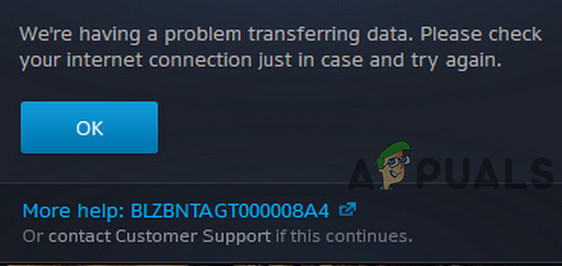
This error usually happens in Overwatch, World of Warcraft, and Call of Duty series games. In some cases, this error can occur to all the computers on the same network whereas in other cases, it only affects only one system. Also, some users reported that only the affected game suffers through this error whereas other games in the Battle.net launcher operate fine.
Before moving on with the solutions to fix the BLZBNTAGT000008A4 error, it will be a good idea to restart your system. Also, clean boot windows to rule out any software conflict. Moreover, if using a wireless connection, then switch to the ethernet. And if already using ethernet, then try to use a wireless connection. You can also try to Disable your antivirus or turn off your firewall to rule out their interference in the error.
Solution 1: Disable/Enable Network Connection and Change the DNS Server
A temporary communication glitch with your network adapter can cause the BLZBNTAGT000008A4 Blizzard error. This can easily be removed by disabling and then re-enabling it. Moreover, an overloaded DNS server or a corrupt DNS cache can also cause error message. In this scenario, clearing the DNS cache and changing your DNS server may solve the issue.
- Quit the launcher.
- Press Windows key and type Network Connections. Then click on View Network Connections.

Search for Network Connections - Now right-click on any of the network connections and select Disable.

Disable Network Connection - Repeat the same process to disable all the network connections.
- Then restart your system. Upon restart, enable network connections.
- Now open the launcher and check if it is operating fine.
- If not, then quit the launcher and press Windows key and type Command Prompt. Then in the search results, right-click on Command Prompt and click on Run as Administrator.
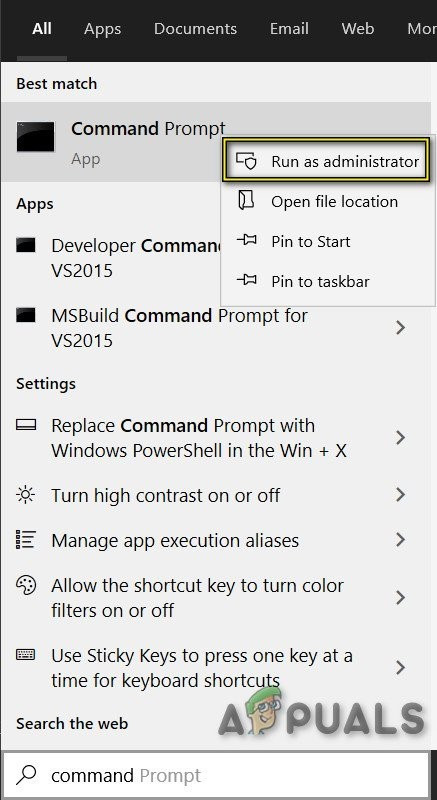
Run Command Prompt as Administrator - Then type the following command:
ipconfig /flushdns

and press the Enter button.
- Now switch to another DNS server.
- Then open the launcher and check if it is working.
Solution 2: Temporarily Change Your Network or Use a VPN
ISP’s always applying new techniques and methods to route web traffic more effectively and safeguard the end-users. During this process, if an essential resource for Battle.net launcher or the game gets blocked, then you may encounter the error under discussion. In this scenario, either switching to another network or using a VPN may solve the issue.
- Quit the launcher and close its related processes through the Task Manager.
- Switch to another network temporarily. You can use your phone’s hotspot but keep an eye on the size of the download. Moreover, you can also try a VPN to bypass the ISP’s restrictions.
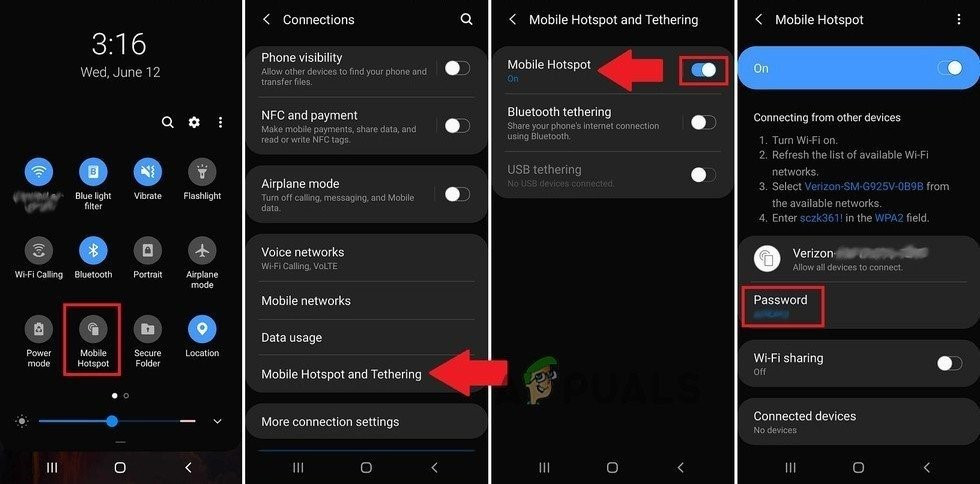
Turn On Mobile Phone Hotspot - Now open the launcher and check if it has started to operate fine.
Solution 3: Change Your Region in the Launcher/Game Settings
To deliver its content, Battle.net uses different geographically distributed groups of regional servers i.e. CDNs. If your regional server is overloaded by the users, then your regional server will try to balance the load and this may result in the current Battle.net error. In this case, switching your server/region/account in the launcher and game may solve the issue.
- Logout of the Battle.net launcher.
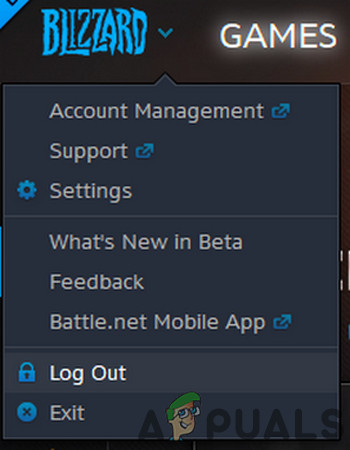
Logout of Blizzard Launcher - Just above your login information, click the dropdown box and select the region as per your preferences e.g. if you are in Europe, then try to switch to America.
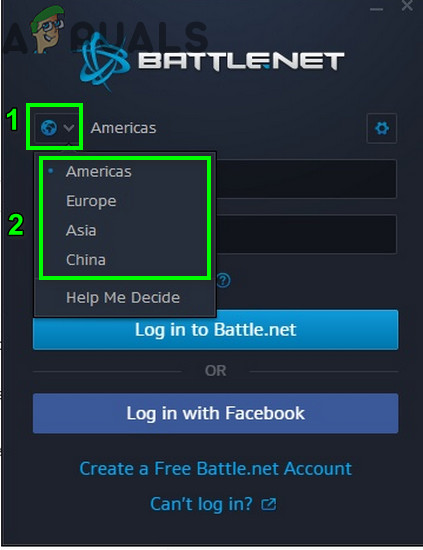
Change Region in the Blizzard Launcher - Now quit the launcher. Then launch your VPN and connect to the region which you chose in step 2.
- Now open the Battle.net launcher and log-in using your credentials.
- Then navigate to the game you were having issues with e.g. if you were having issues with Modern Warfare, then select it and change its region as you selected in step 2.

Change Region in the Game Settings - Now start the downloading/updating process again to check if it is clear of the error.
Solution 4: Delete the Battle.net Files to Reset Settings of the Launcher or Game
Every gamer customizes different settings of the launcher/game to make things as per his requirements. But the current Battle.net error can arise when this customization/configuration starts to interfere with the game engine. Given the conditions, deleting the folders to revert the launcher and game to the default settings may solve the issue.
- Quit the launcher.
- Right-click on the Taskbar and in the menu shown, select the Task Manager.
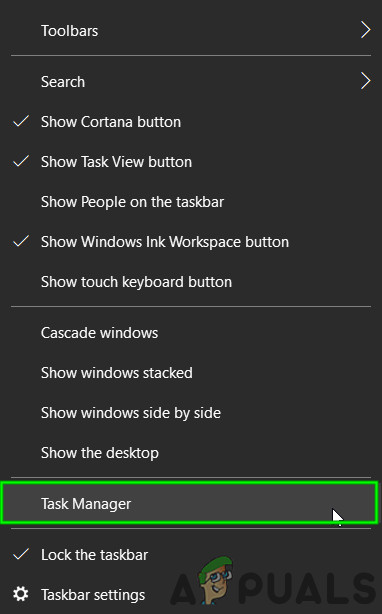
Open Task Manager - Now in the Task Manager, right-click on the battle.net.exe and then click on End Process.

End Battle.net process - Repeat the same for the Agent process and any other Battle.net launcher process (if there is more than one instance, then repeat for all the processes).
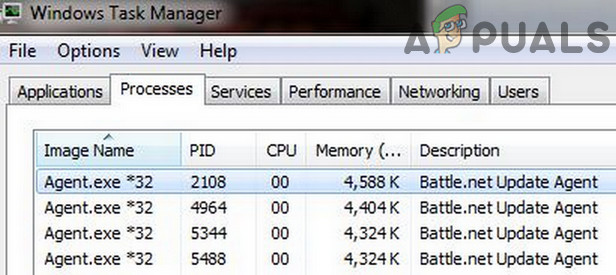
End Process of Agent - Then press Windows + R Keys and type %ProgramData%.
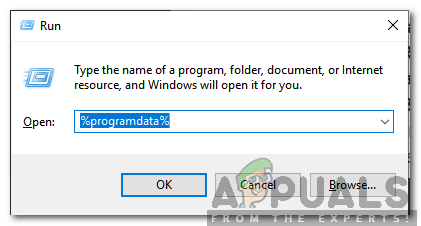
Typing in “%Programdata% and pressing “Enter” - In the Program Data folder, there will be two Battle.net folders. Delete (rename if you want to play safe) the Battle.net1 folder and open the 2nd Battle.net folder.
- In this folder, find and delete (or rename) the Agent folder.
- Now open the game folder you are having issues with and in its folder navigate to Beta/WTF folder.
- In this folder, find and delete (or rename) the Config.WTF file.
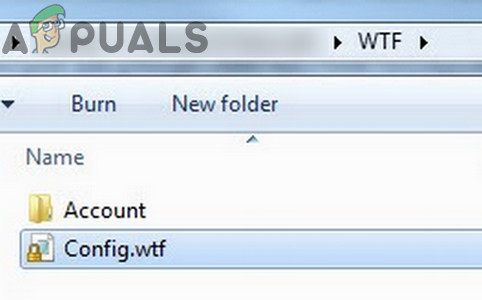
Delete the WTF.config file - Now open the Battle.net launcher and check if it is operating fine.
Solution 5: Limit the Usage of Network Bandwidth in the Game Settings
To complete the installation/updating process of the game, you need a stable internet connection, not a fast one which has too much variation in speed (especially if you are using wireless broadband). The same varying speed of your internet connection could cause the error under discussion. In this case, limiting the bandwidth of the game may solve the issue.
- Open the Battle.net launcher.
- Then navigate to the game you were having issues with e.g. Call of Duty: Modern Warfare.
- Now click on the gear icon next to the progress bar shown, then in the displayed menu click on Settings.
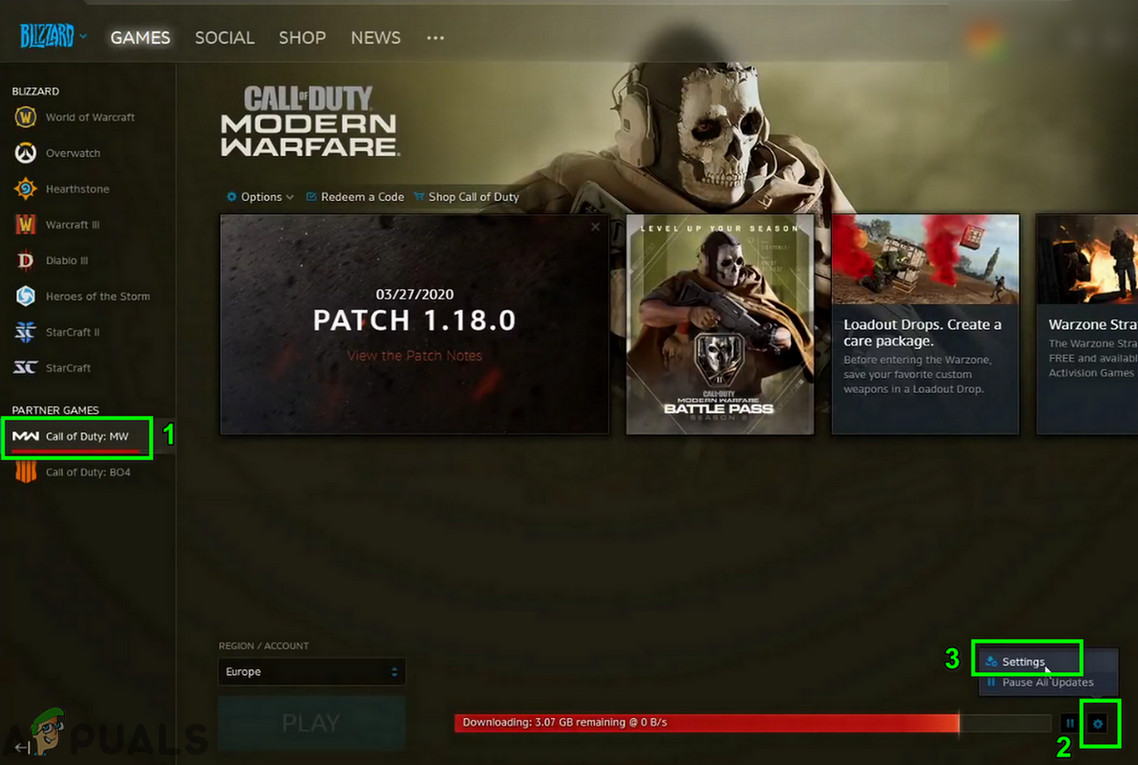
Open Settings of the Game - Then scroll down till the end, now under the Network Bandwidth, in the box of Latest Updates, enter 300 or 500, and then click on the Done button.
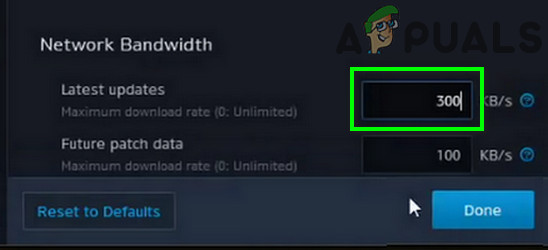
limit the bandwidth of the Game - Now pause and then restart the download.
- Now check if the installation/updating process has started to move on, if so, then you can reset the speed back to zero (unlimited).
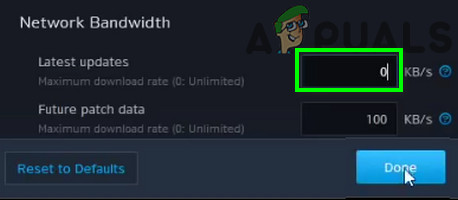
Set the Bandwidth Usage to Unlimited
Solution 6: Use the Mini-Client Setup of the Game
If you are still having issues with the launcher/game, then you can try to use the mini-client setup of the game. This setup will update the launcher and thus solve the problem. But keep in mind that not all the games support this feature.
- Open your browser and navigate to the Battle.net shop page of the problematic game e.g. from Call of Duty: Warzone shop page.
- Now click on Play for Free button (if your game supports the feature) which will download a mini client setup (approx. 5 Mb for Call of Duty: Warzone).
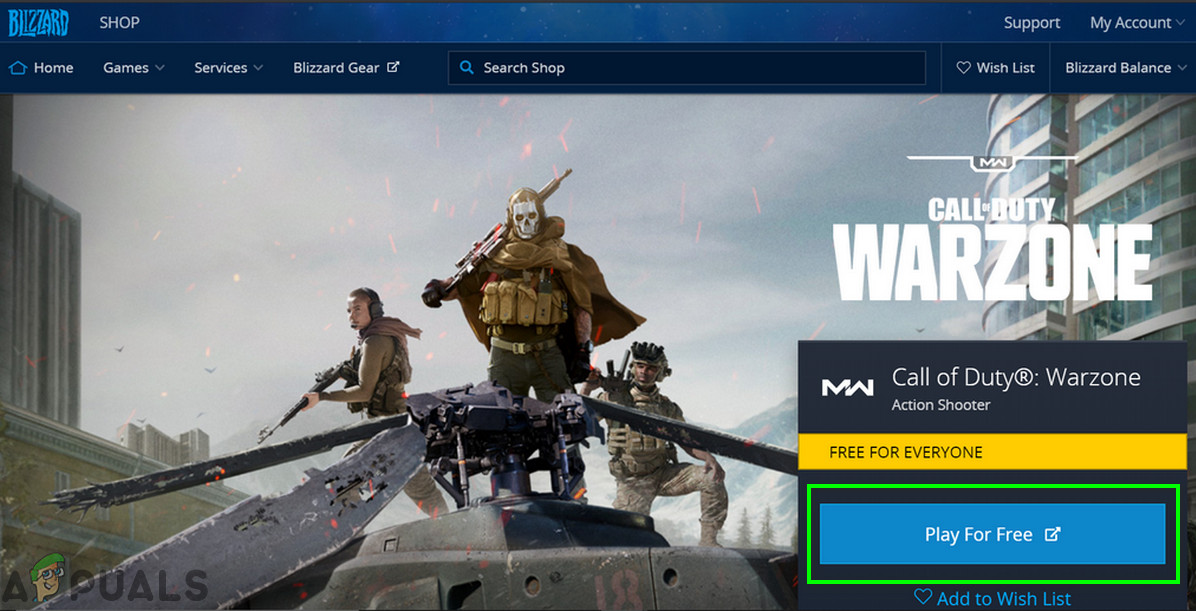
Click on Play For Free - Launch the downloaded setup with administrative privileges and it will update your battle.net launcher.
- Now try to install/patch the game normally and hopefully, the game is clear of the error now.





